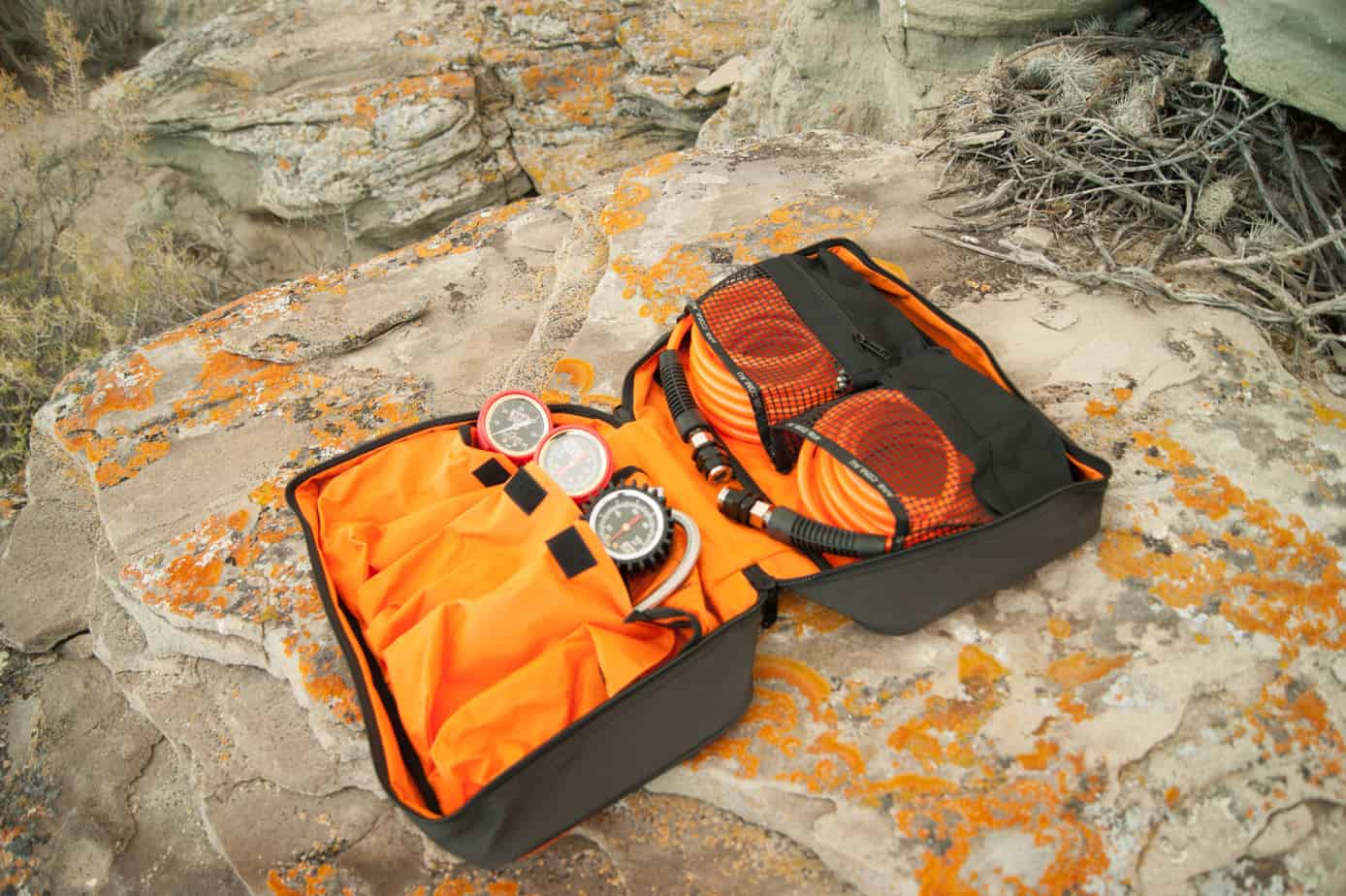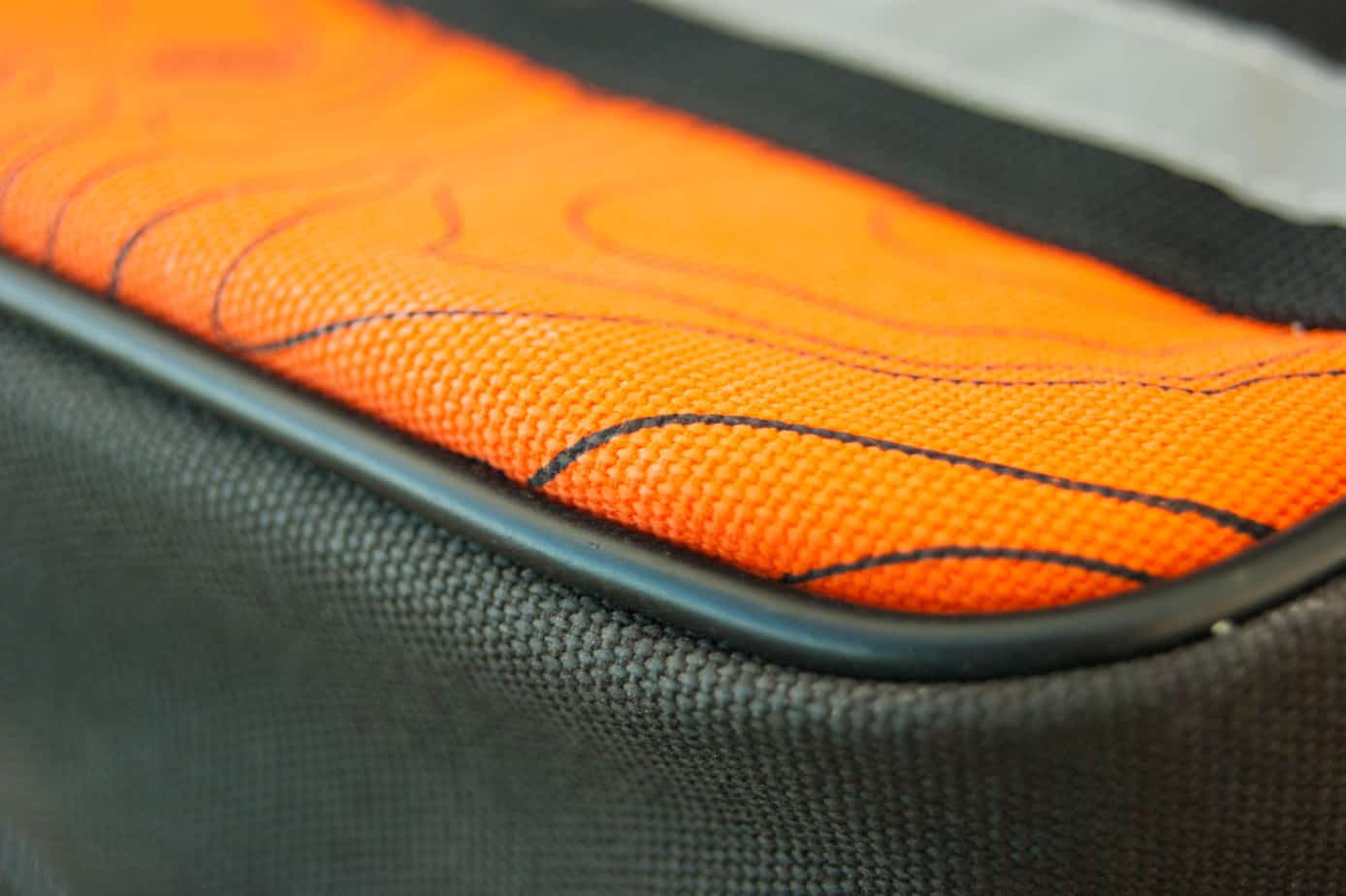Any type of gauge with a dial indicator tends to be a delicate device -especially one that reads tire pressure. Working in motorsports, I quickly learned to keep my gauge by my side and to never let anyone else touch it for fear that it may become “adjusted”. I wasn’t just being OCD either. Drop it once, and it can easily be off by as much as 10 psi. That’s why I was stoked when ARB sent me one of their brand new inflation cases.
ARB Inflation Case Loadout -Sold Seperately
ARB605: Inflator with gauge braided hose lock-on
ARB506: ARB Air pressure gauge
ARB508: ARB Large dial tire gauge
171301: ARB Air hose kit
171302: ARB Pump up kit
ARB505: ARB EZ Deflator
ARB606: ARB Inflator wand
ARB607: ARB Inflator coupling lock on
*Sidebar. I have noticed a few recent online posts where people have performed a side-by-side comparison of their tire pressure gauges only to discover they vary greatly in pressure readings. There are two reasons for these discrepancies. One, manufacturer tolerances; few (if any) gauge manufacturers do any sort of bench testing with their products. Thus, there can be vast differences in accuracy from gauge to gauge. Two, the gauge you are handling could have been dropped by a factory worker, shipping company, or you at some point. So what am I getting at? Tire pressure gauges should be checked periodically for accuracy to prevent over or under pressurizing your vehicles tires. This is important for tire wear, performance, and safety factors. This can be difficult since nearly every gauge you reach for is likely off by 20% or more. TPMS equipment, although not perfect, is fairly accurate and can provide you with insight as to the degree in which your gauge is off the mark. You can use this information to mark the gauge with a sharpie indicating that it is reading +2 or -3 PSI so that you can better measure pressure. Tire pressures should be checked when the tires are cold, ie. before hitting the road, and not when they are hot (unless you are working on a track car, then you will need both hot and cold pressures). Of course, there are tire pressure gauges that can be calibrated, but this procedure should be performed by a tire supplier at a racetrack, or an air tank supplier with the proper equipment. This is the only way to ensure that your gauge is displaying accurately, that is, until someone drops it again. No matter how you do it, be certain to protect and care for your delicate dial gauge equipment -your tires will thank you.










One Comment
johnw
October 8th, 2018 at 7:26 pmI bought this case and it is great to keep all my ARB Gauges safe, The bright colour is good making sure it never gets left behind and the build quality is well above par, It has plenty of room for spare hoses and spare parts needed along the way, It’s nice to know that everything has it’s place and can be all kept together in one spot, well thought out piece of gear.